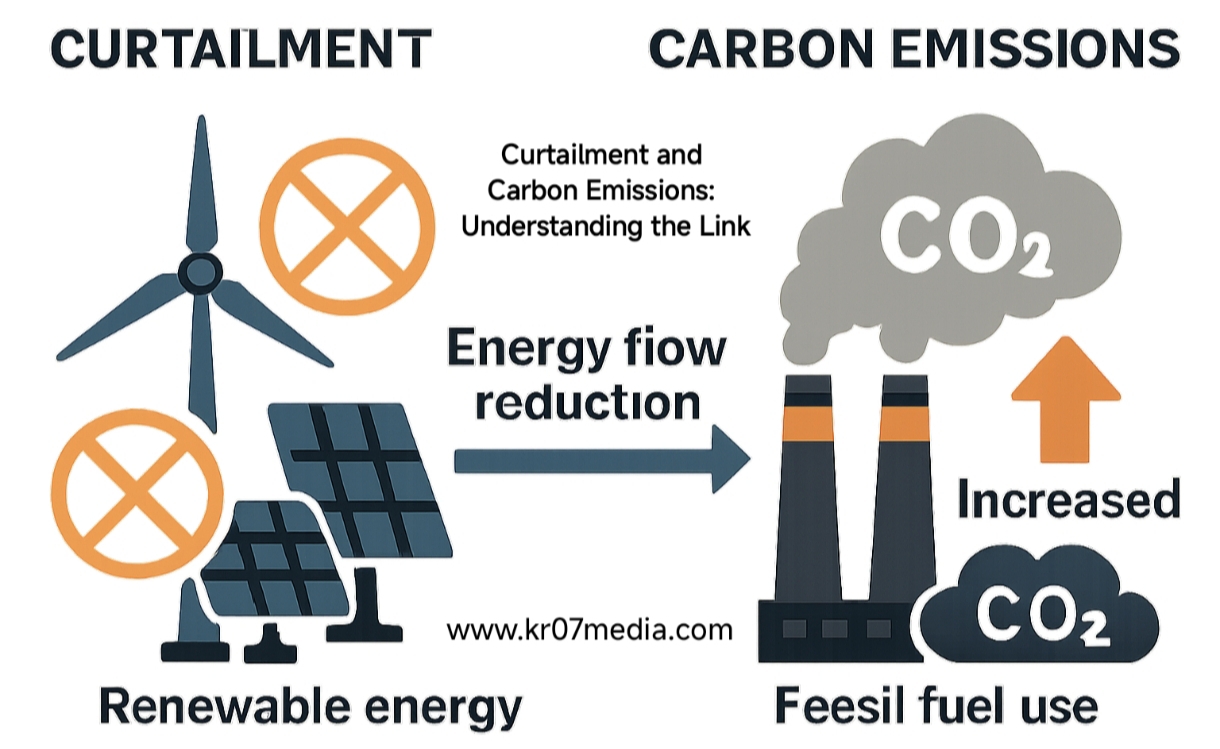What Is Curtailment?
Curtailment in the energy sector refers to the intentional reduction of power output from generation sources, most commonly renewables like wind and solar. It's primarily used to maintain grid stability, prevent overloads, and manage supply-demand mismatches—particularly during periods of excessive renewable energy generation that exceeds the grid’s current ability to transmit or use it.
Why Does Curtailment Happen?
Grid Congestion:
The transmission system can only carry a limited amount of electricity. If renewable power exceeds this limit, some generation must be curtailed.
Supply-Demand Mismatch:
During sunny or windy periods, renewables might generate more electricity than is needed locally, especially if storage options are limited.
Economic Signals:
At times, electricity prices can become negative, signaling to producers (and grid operators) to cut back excess supply.
Reliability and Safety:
To avoid blackouts, grid operators must balance supply and demand precisely; curtailment is a tool in this balancing act.
Curtailment’s Impact on Carbon Emissions
Curtailment is a double-edged sword for carbon emissions:
•When renewable energy is curtailed, it means carbon-free electricity is not being used to its full potential.
•The electricity that gets replaced—or avoided—due to curtailment often comes from fossil fuel power plants, which are more flexible but also emit CO₂ and other greenhouse gases.
Missed Decarbonization Opportunities:
•Each instance where renewables are curtailed instead of fossil fuels means a missed opportunity to cut carbon emissions.
Research and Real-World Evidence
•Studies have shown that curtailment can, counterintuitively, increase total system emissions if not managed properly. Stringent caps on curtailment (forcing grid operators to almost never curtail) can paradoxically lead to:
•Increased reliance on flexible fossil generation (mostly gas and coal) to balance the system,
•Depressed investment in further renewable capacity,
•Higher overall system costs,
•Ultimately, higher emissions due to increased start-up and shut-down of fossil plants.
•For example, one analysis concluded that capping curtailment at 5% in China led to a 7% rise in CO₂ emissions—primarily from coal plants—and significant increases in system costs.
Environmental and Economic Ramifications
Financial Losses for Renewable Operators:
Projects forced to curtail forego potential revenue, which can threaten their financial viability.
Resource Inefficiency:
Renewable investments utilize environmental resources. When energy is curtailed, the environmental payoff of those investments (replacing fossil fuel emissions) is not fully realized.
Grid Stability Pressures:
High levels of curtailment can indicate the need for better grid infrastructure, storage solutions, or more flexible demand to make the most of renewable output.
Solutions and Mitigation
Grid Upgrades:
Expanding transmission and distribution networks to better accommodate renewable power flows.
Energy Storage:
Deploying batteries or other storage can help absorb surplus renewable energy, avoiding curtailment.
Flexible Demand:
Shifting flexible electricity use (like data center workloads or industrial processes) to times when renewables are abundant can cut both curtailment and emissions.
Policy and Market Reform:
Well-designed energy policies and market signals that incentivize renewable integration can reduce curtailment and optimize the climate benefits of renewables.
In summary: Curtailment is a necessary tool in today’s energy grids but has complex implications for the push to reduce carbon emissions. While it helps maintain system reliability, high levels of curtailment can undermine the emissions-reduction gains of renewables, especially when fossil fuel plants fill the gap. Addressing curtailment requires smart grid investments, storage, demand management, and thoughtful policies to maximize both environmental and economic returns from the clean energy transition.



